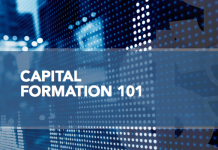
Foreword
Concerns about the low U.S. saving rate and its negative impact on capital formation and economic growth have been a key driver of the American Council for Capital Formation Center for Policy Research’s (the Center) agenda for the past four decades. In recent years, in addition to sluggish economic indicators, increased political rhetoric that ignores the value of capital formation has prompted the Center to undertake a program that will communicate the importance of capital formation by going back to basics: What is capital formation? What are the factors that affect its development? Where do we stand vis-a-vis to our major competitors? How can we encourage more capital formation?
In May 2016, we released our first report, Capital Formation 101 that took a closer look at these issues. In conjunction with the release of the report, the Center hosted a teleconference between two widely recognized experts on capital formation: Northwestern Professor Robert J. Gordon and Harvard Professor Dale W. Jorgenson. The Center roundtable, moderated by the Wall Street Journal’s chief economics commentator, Greg Ip, delved into the basics of capital formation and productivity, as well as current issues that are hotly discussed by policymakers and economists.
Given current economic trends, the approaching elections, and the imminent unveiling of the candidates’ and party economic platforms, we think the panel discussion will broaden the understanding of how these issues will shape the future of the U.S. economy. We believe that the right policy choices can help spur much needed investment and long run economic growth. With this discussion, our hope is to complement our previous research and provide a better understanding of the issues surrounding capital formation, productivity and economic growth.
Download the full report:
Capital Formation: Challenges andOpportunities for the Next Administration






